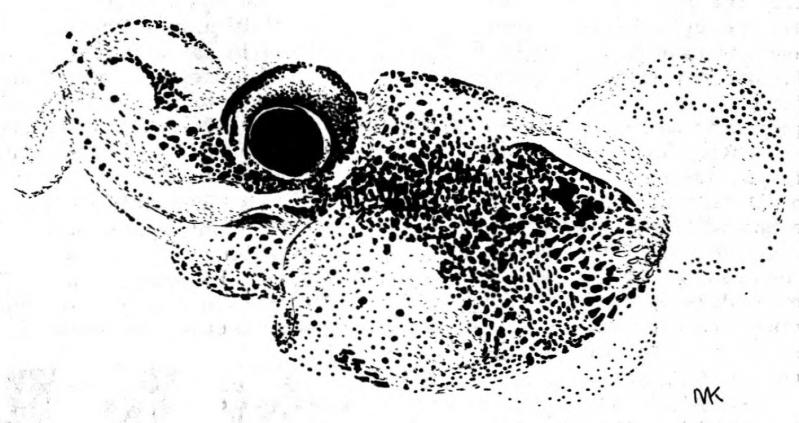After a disappointing day on the bay, the Incompleat Angler faces hamburgers for dinner. Next time, be efficient. Just serve the bait. The squid that winds up as free lunch for so many fish might be an excellent meal for people.
From now through summer, the Atlantic squid will be coming close to shore to spawn. Fishermen gather them in the nearby bays. These are tidy, small-to-medium specimens. (Giant squid can attain an overall length of some 75 feet without the benefit of science-fiction.)
To afficionados of Mediterranean cooking, the squid is known as "calamari." Some people call them cuttlefish. Ask for squid around here. Some local fish markets have them fresh. Stuart's, Taber and Schutte, Howard's, and Catena's are the usual purveyors of fresh squid, but never in great quantity, due to perishability. An advance reservation would be practical.
Frozen, Too
On the other hand, frozen squid are widely available. Many of the markets sell their frozen squid exclusively for bait (or so it would seem). Yet Gristede's, never known as a bait shop, has five-pound packages of squid shipped from California for $2.49, a remarkable buy.
Elsewhere squid, fresh or frozen, runs $.75 to $1.00 per pound. There is not a marked culinary difference between the fresh and the frozen product. However, before you buy frozen squid from a fish market, be sure it hasn't been in the freezer since last fall. A month or two is the limit for human consumption.
Depending
Figure about one-half pound of whole squid per person, depending on how well it is received.
The whole squid is an elongated triangle with head and tentacles at the base. To clean squid, cut off the tentacles. Then pull everything out of the inside (a flat, transparent bone and some other stuff including the ink sac), cut it away, taking care not to break the ink sac, and discard. You should be left with an empty, pointed tube and a bunch of tentacles.
Squid are simple to prepare. And when prepared simply, very delicious. (The elaborate stuffed and sauced numbers found in most cookbooks are an acquired taste and texture and may be the reason why the squid is only slightly less popular than the eel.)
Onion Rings
Along the sea, in Greece and southern Italy, platters of fried squid, fresh and hot, are a fantastic lunch. American children, thinking they are onion rings, gobble them up in a twinkling. Told they are squid, they accept the fact with glee and devour more.
The following is the easiest method. It's great for an informal supper or cocktail hour. Squid spatters vigorously while frying, so don't attempt this one with a bare midriff.
Mediterranean Fried Squid
Six medium squid (1 1/2-2 pounds)
1 cup flour (approx.) seasoned to taste with salt and pepper
1 1/2 cups olive oil or other cooking oil (approx.)
Lemon wedges
Thinly slice squid crossways, to form rings. Dry the rings and tentacles. Dip rings and tentacles in seasoned flour (or shake them together in a paper bag). Pour oil to depth of at least one-half inch in a large skillet.
Fry squid rings and tentacles over high heat until golden brown, turning if necessary. Do not crowd them in the pan. Add additional oil as needed. Drain on absorbent paper, season with more salt and pepper and serve with lemon. Serves four.
Another recipe is one the Everett Rattrays enjoy. The squid are sliced into narrow, flat pieces lengthwise, sauteed in a mixture of butter and olive oil to which a touch of garlic has been added, and served with pasta and tomato sauce. Their children think they are eating noodles.





